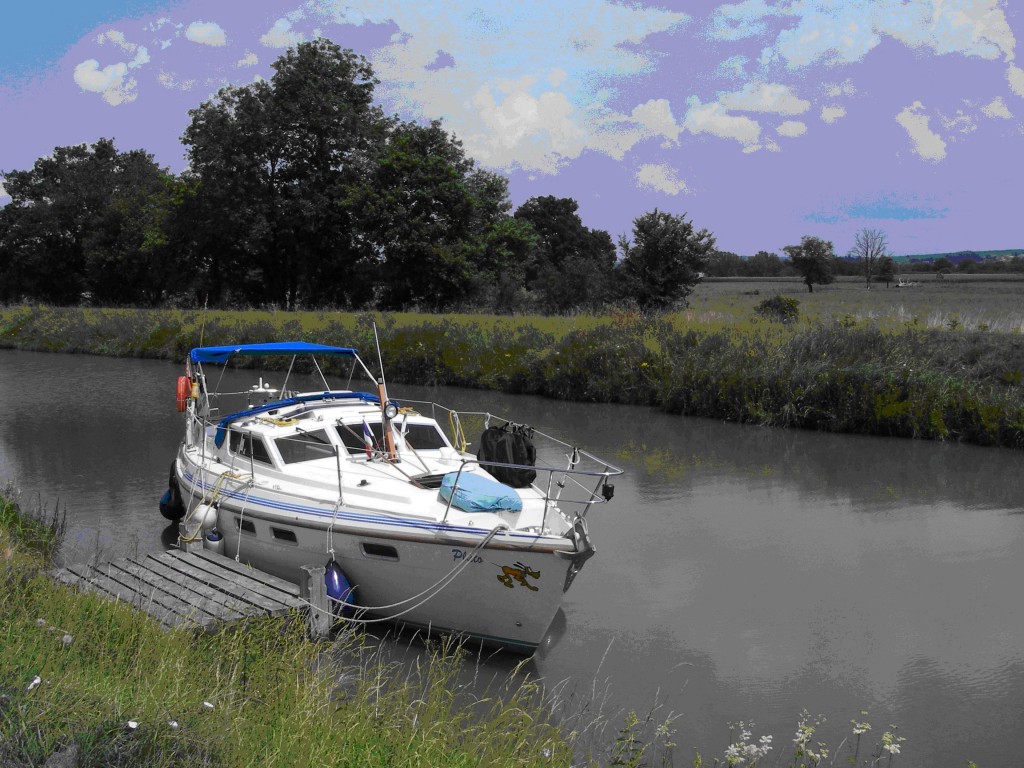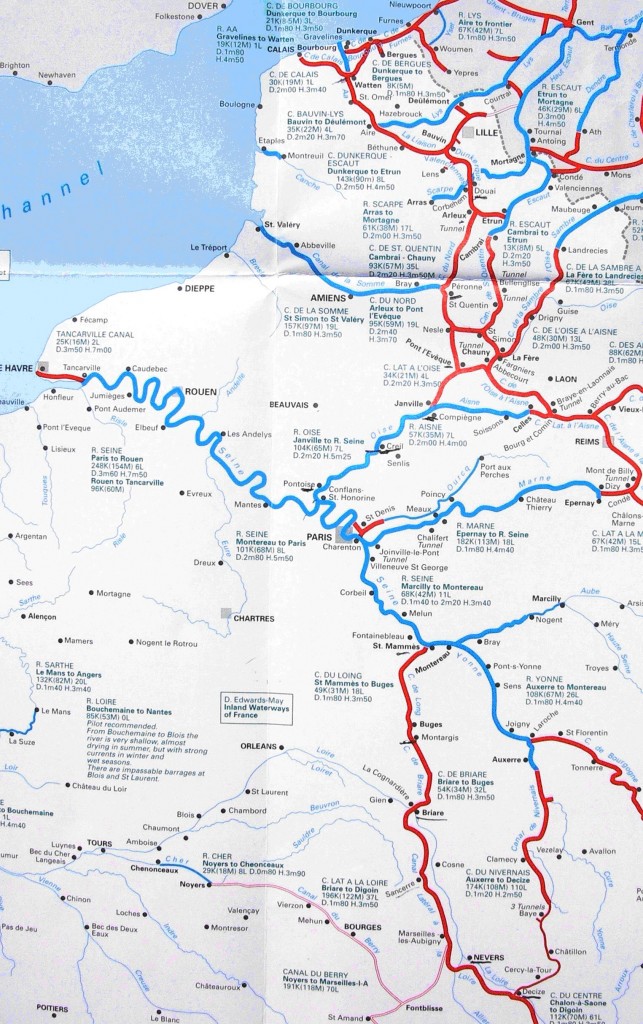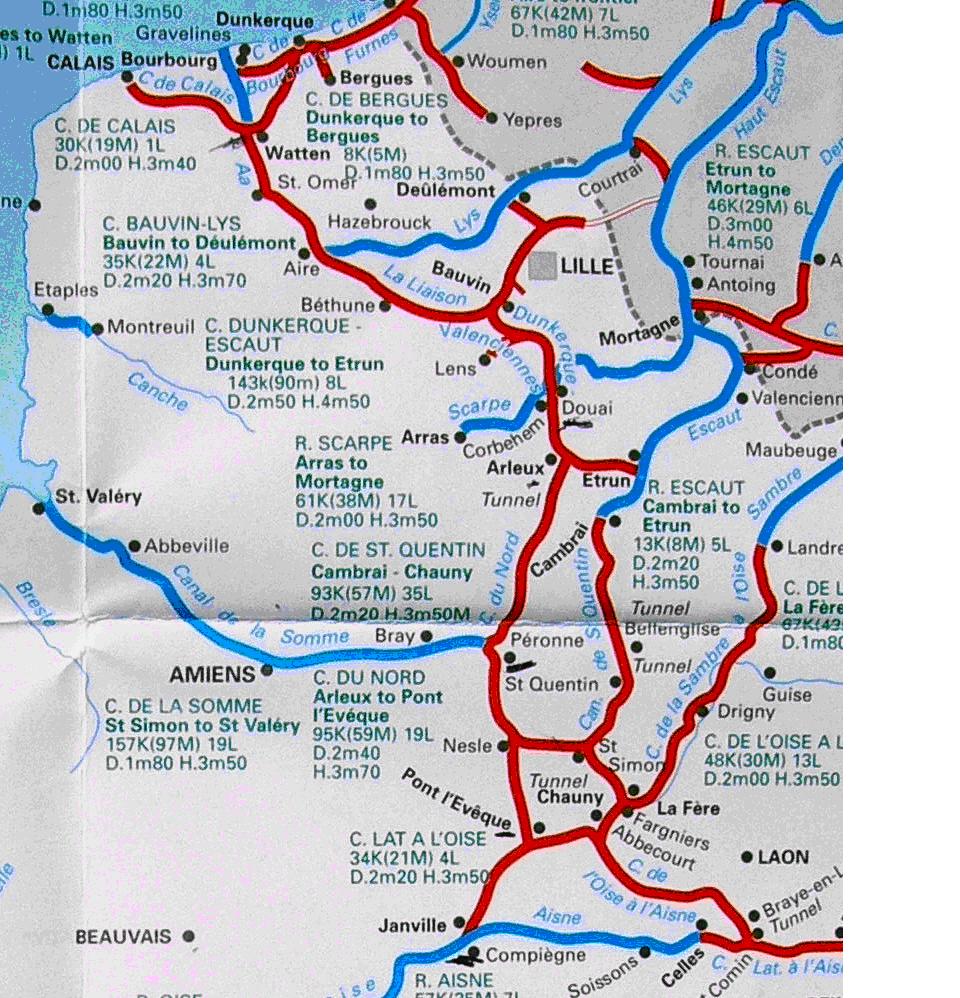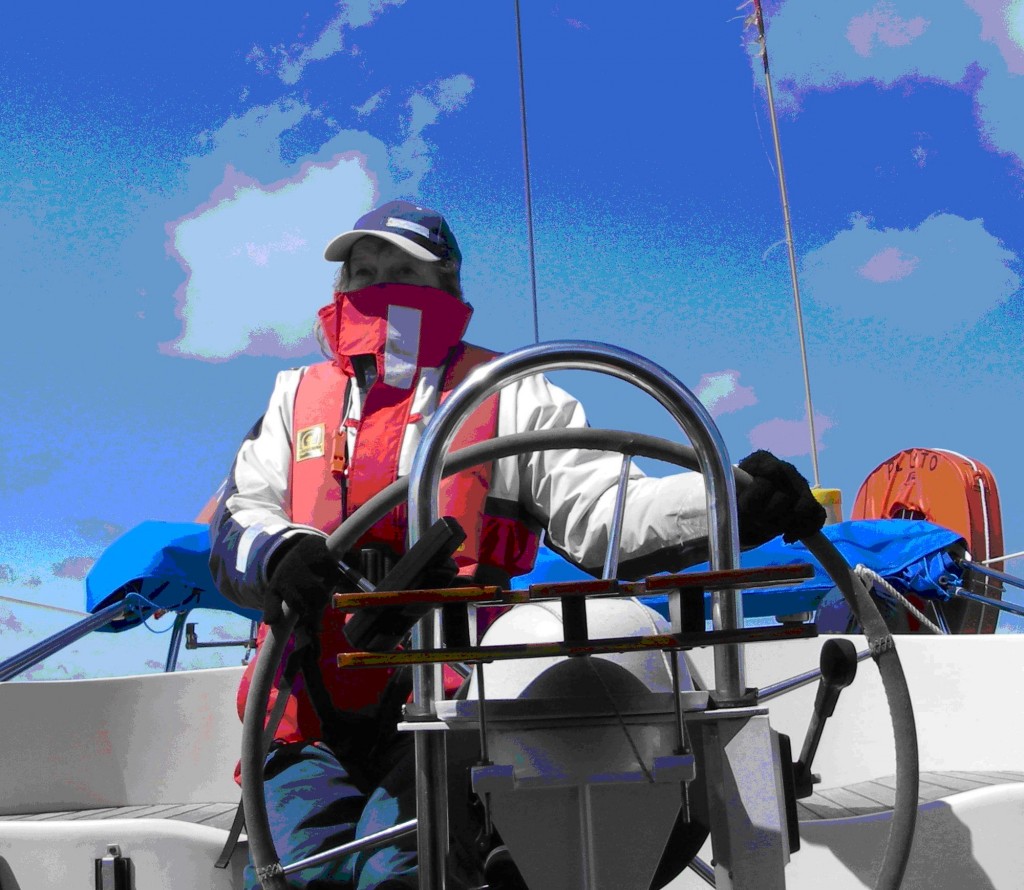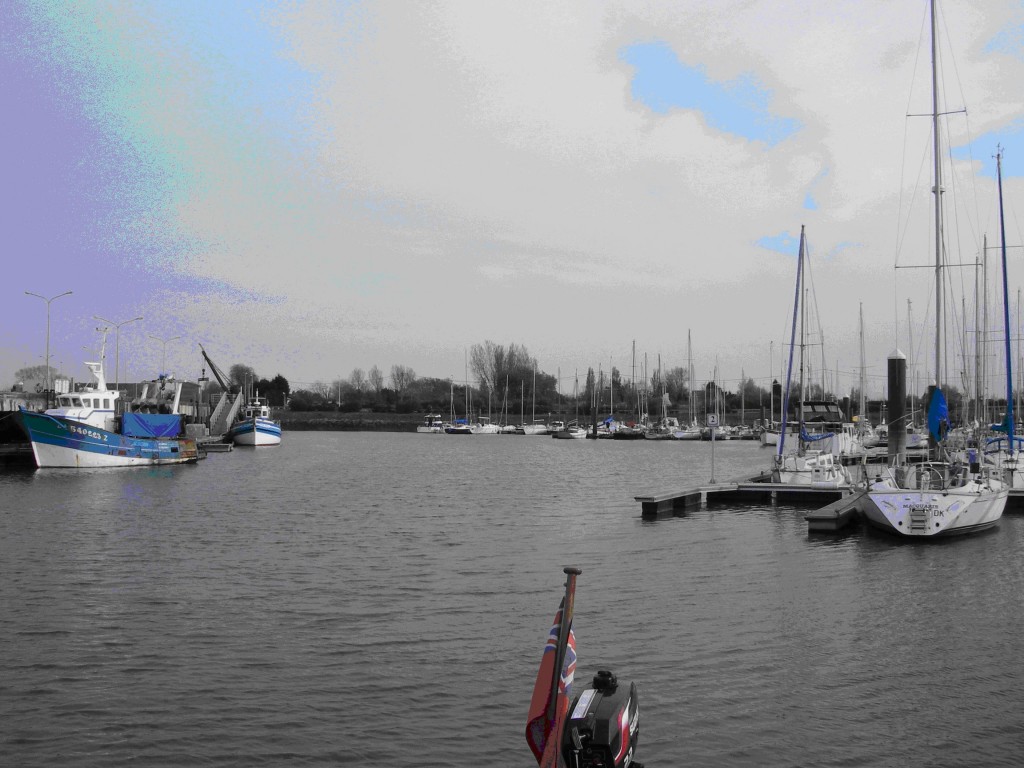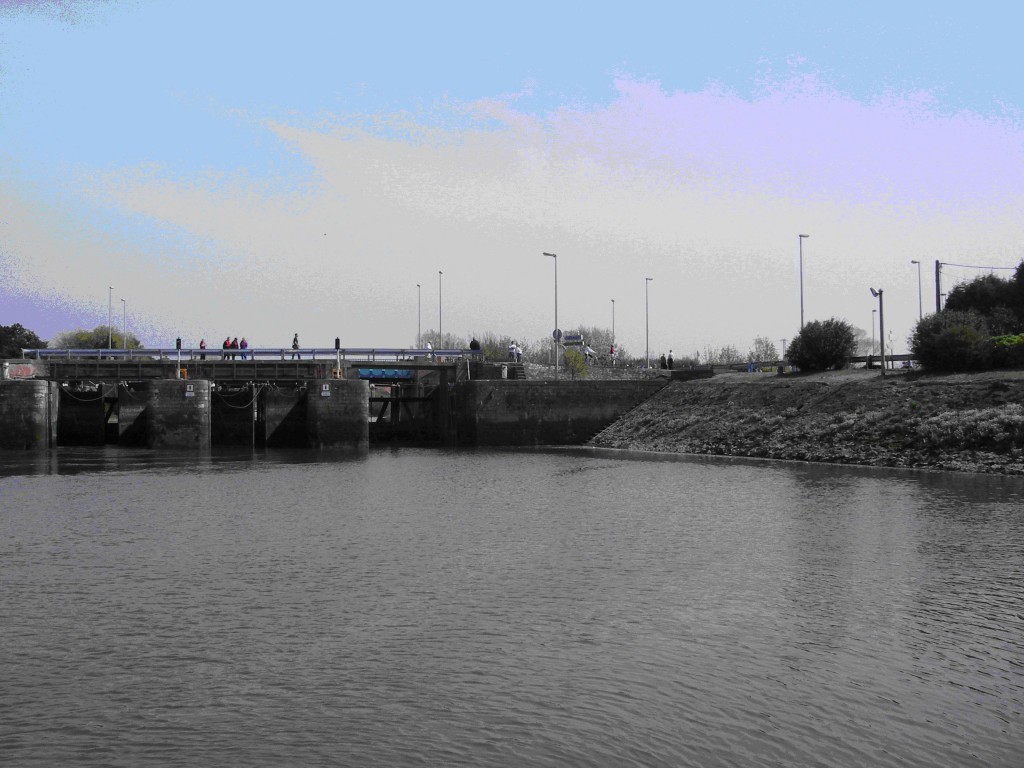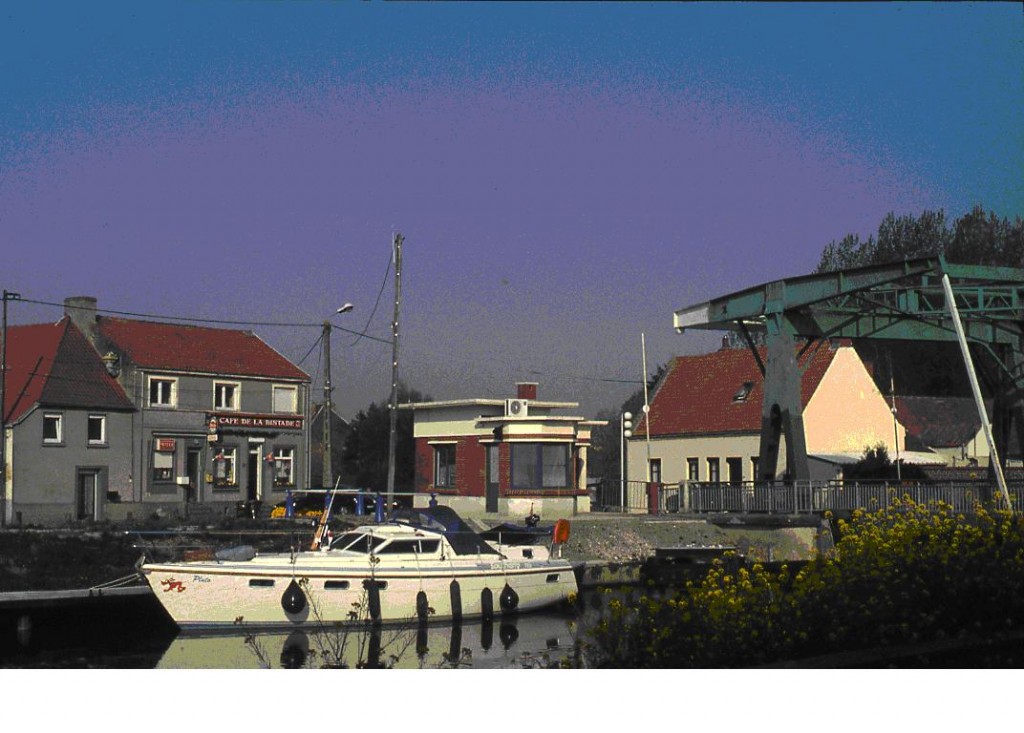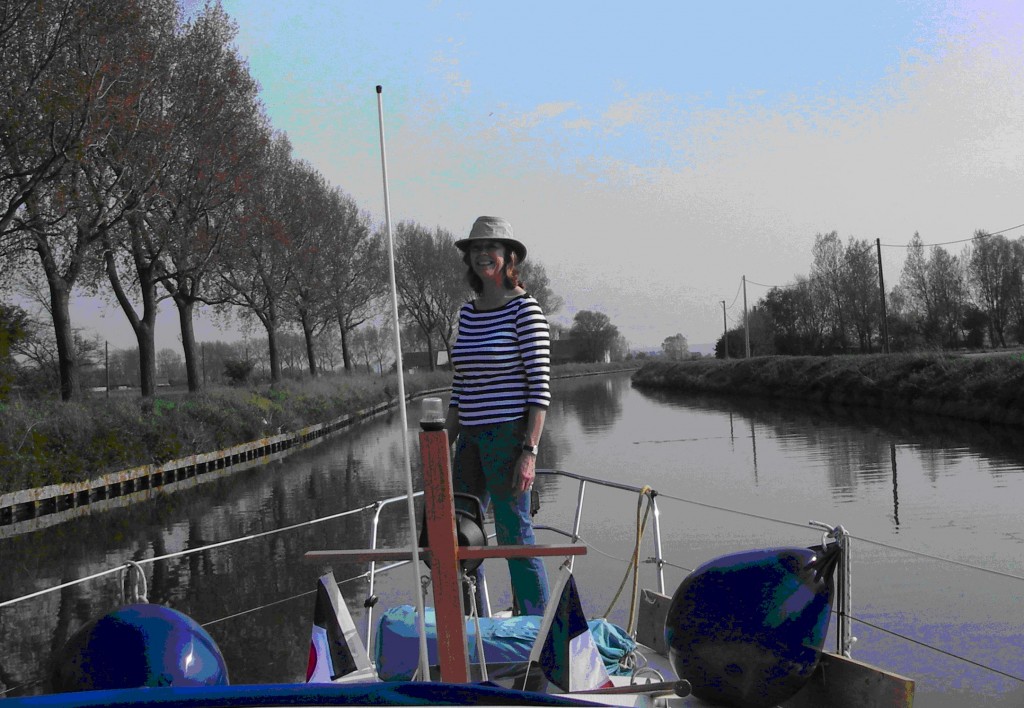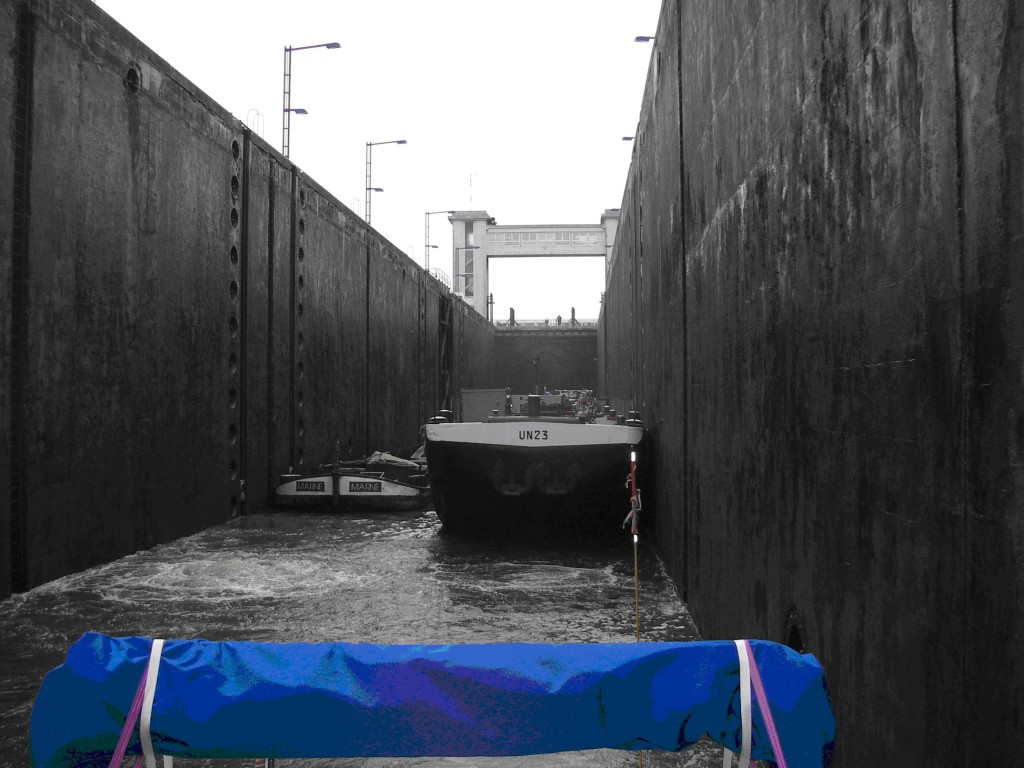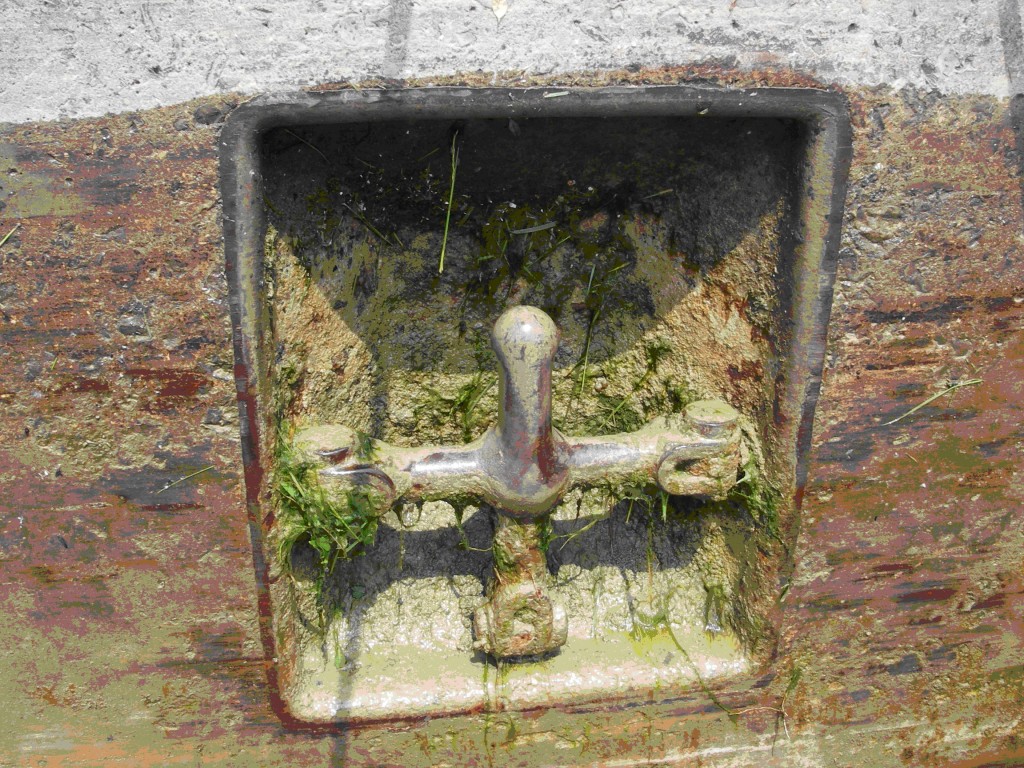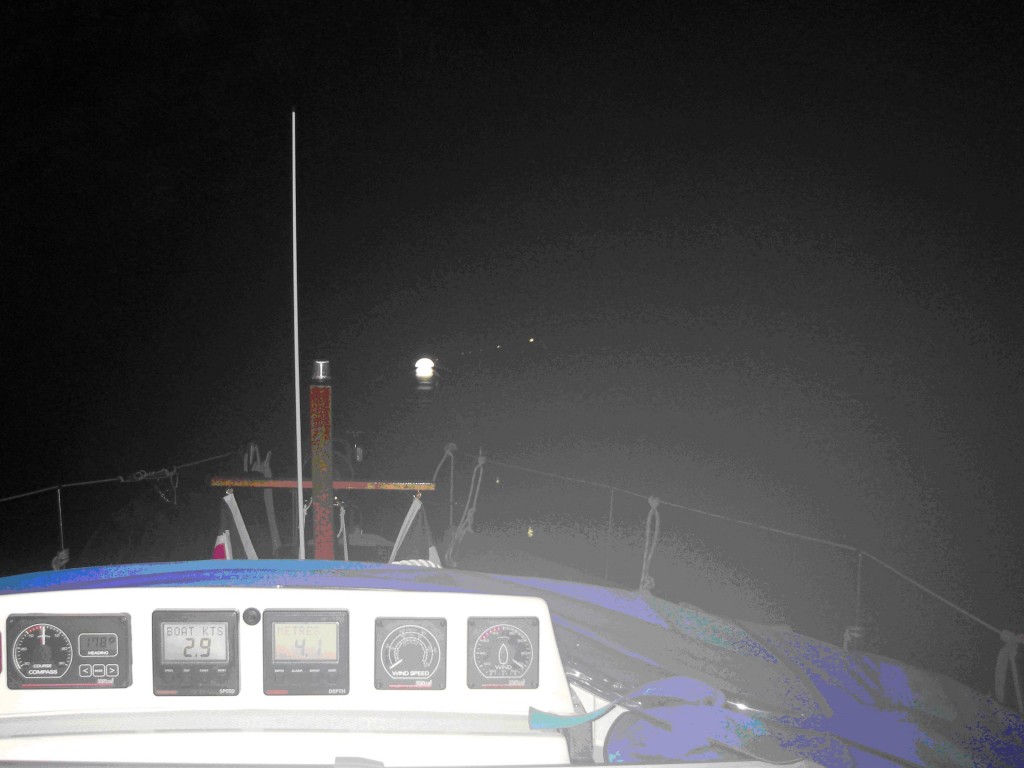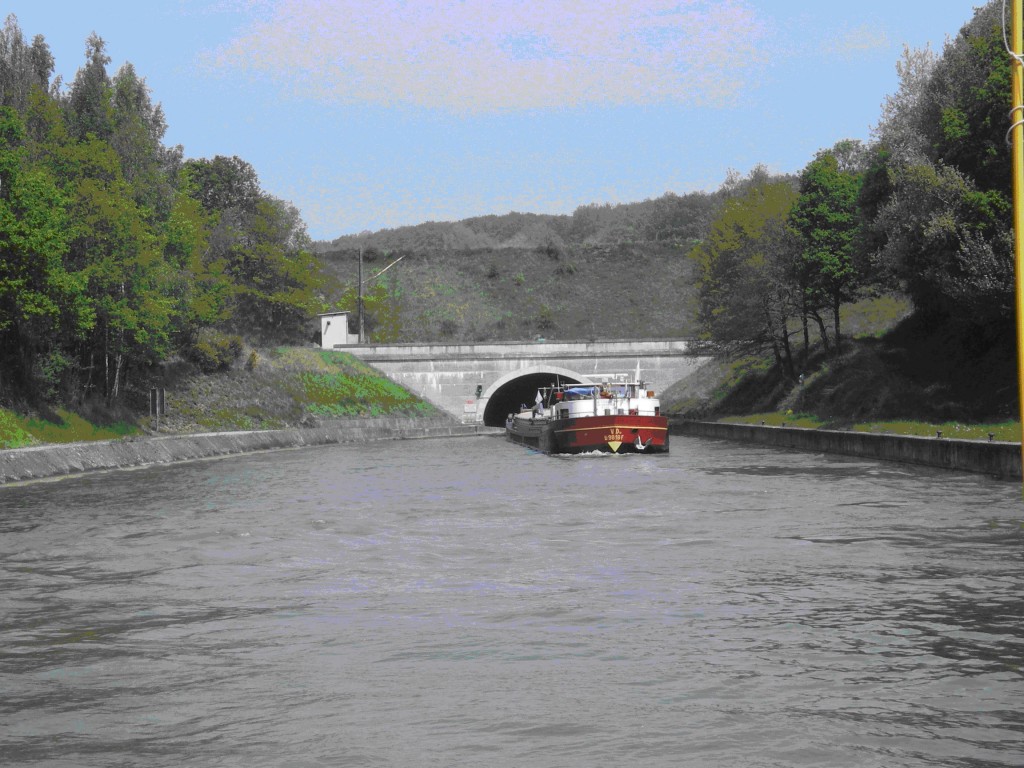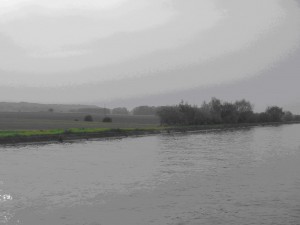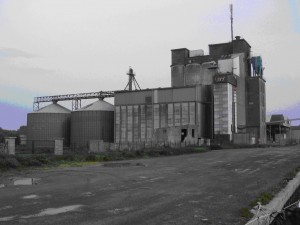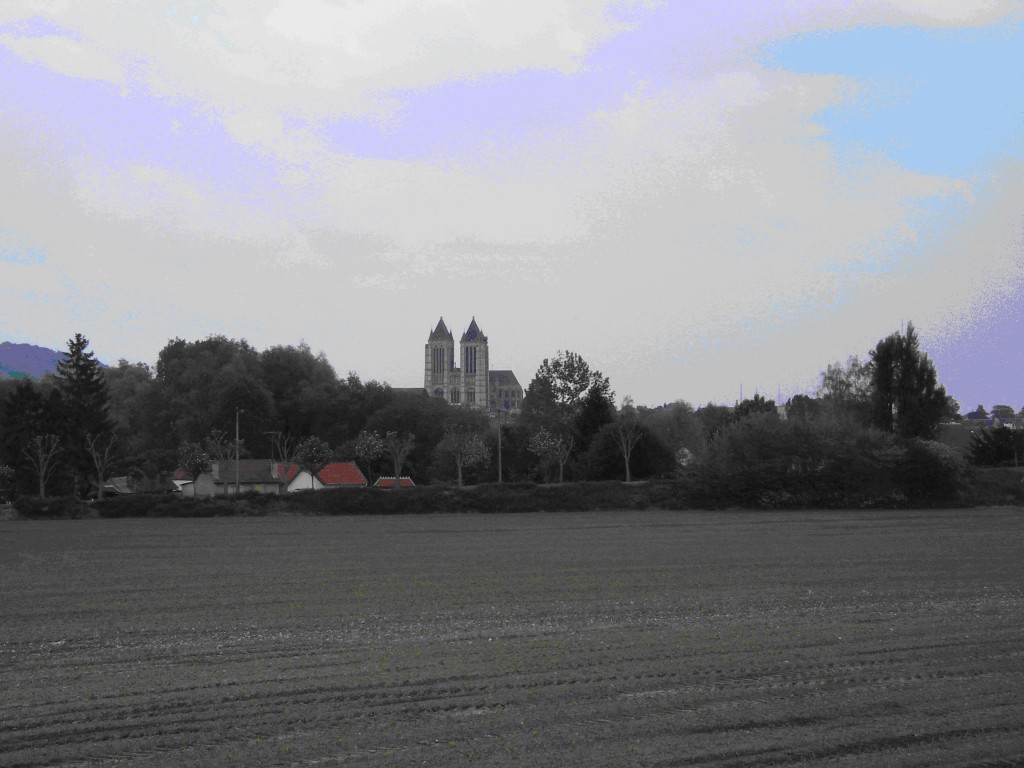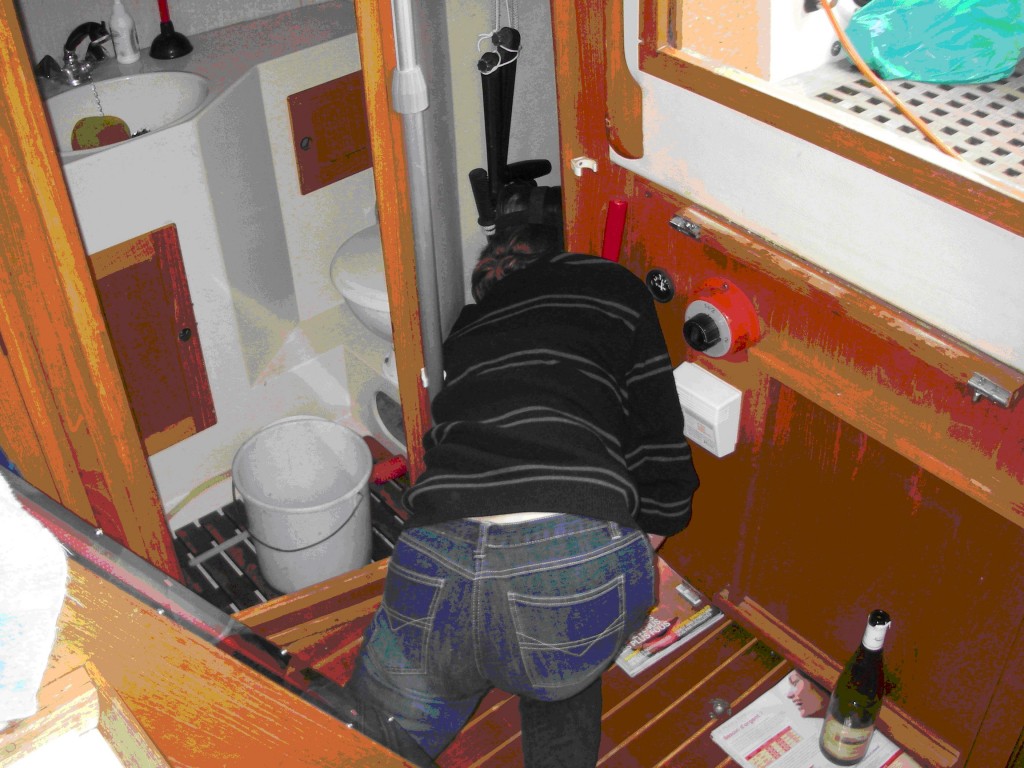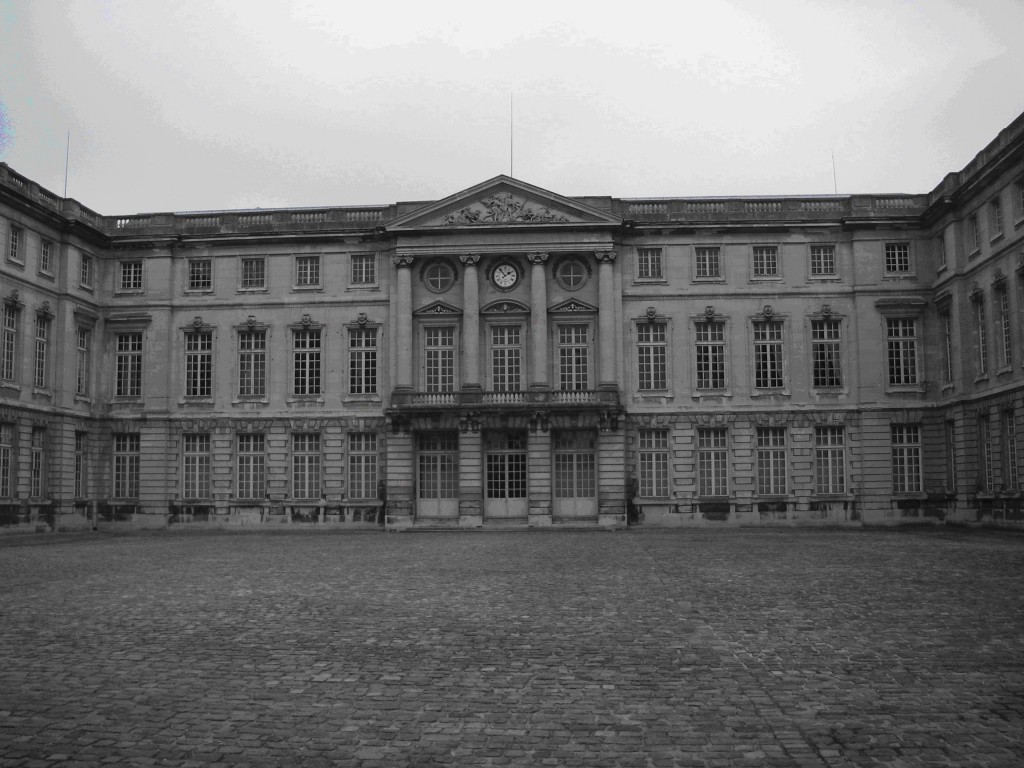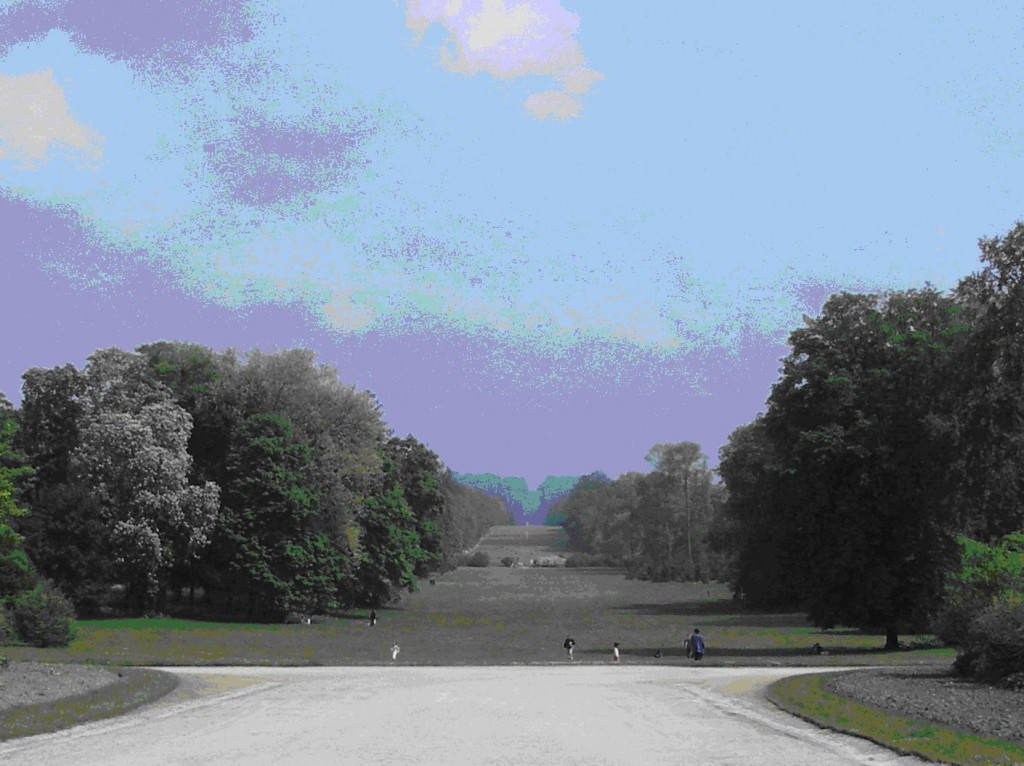This content is provided by the kindness of Jules Dussek and Vanessa Dussek They hold the ©copyright 2013 for this material all rights reserved it may not be copied without permission.
Jules full book may be purchased and downloaded for 5 BP at
Pluto’s Travels Through the French Canals
I met Jules and Vanessa in 2011 when we happened to anchor next to each other at the town of Okuklje on the Island of Mljet in Croatia. This is their story of their adventures sailing the French Canals to the Med.
Pluto’s Log
Gravelines to Port Napoleon
Via the inland waterways of France
May – October 2006
Skipper: Jules Dussek
Mate: Vanessa Dussek
Vessel: Southerly 115, 11.2m lifting keel masthead Bermudan sloop.
Contents.
May – June. Gravelines to Decize
Part 1 Gravelines to Compiegne ………………………………………. 4
Part 2 Compiegne to Paris……………………………….……… 21
Part 3 Paris to Briare ……………………………………………. 37
Part 4 Briare to Decize……………………………………. 54
September – October. Decize to Port Napoleon
Part 5 Decize to Chalon sur Saone………………………… 68
Part 6 Chalon sur Saone to Avignon……………………… 84
Part 7 Avignon to Port Napoleon…………………………100
May – June. Gravelines to Decize
Part l
Gravelines to Compiegne
Sunday 31st April
Here we are in Gravelines writing in the cabin with the stove alight, washing hanging up, a good supper and a bottle of wine. The wind has dropped, the water is calm.
The skipper has started to strip the boat, disconnect electrics and prepare rigging for taking the mast down for the start of the canal adventure.
We left Conyer Creek in Kent on Saturday having had to disembark unceremoniously Cindy the sailmaker who was still installing the bimini whilst the engine was running ready to leave. We had an uneventful 5 hour trip to Ramsgate under engine, to leave Ramsgate at 06.30 this morning to cross the Channel to Gravelines, having checked the weather which was due to deteriorate soon.
We had a cracking sail almost all the way with a cold NE wind.
The mate at the helm
The voyage took 7 hours and we arrived in good time at 13.30. After mooring we set to taking the sails off. Gravelines is like Conyer in that it is also up a creek of 2 miles from the sea and can only be entered two hours before and after high tide. Once in the marina the lock gates are shut at low water and you are locked in and safe. We dined on the skipper’s sister’s legendary venison stew – just what was needed for two weary sailors in France on Sunday night when everything is shut.
Gravelines
Monday 1st May.
It is a holiday in France and everything is shut again. We were planning a day of rest. We walked into town and found just one supermarket open. It was cold and windy. There was a ceremonial brass band playing and an official procession with wreath laying at the memorial after which the brass band musicians all piled into the local bar for refreshment. It seems even if you wish to use the facilities you are obliged to shake hands with all your friends on the way, which is appropriate because if you are female you have to squeeze past the men at the urinals. We did manage a splendid lunch in the marina bar ‘Cap Compass’ after which we had to have a siesta.
Tuesday, 2nd May.
Demasting day. We approached Tanguay the yard foreman at 8.30 in the morning, the morning after a Bank Holiday and he was acting the part well, longish black hair, smoking, dark glasses and holding a cup of coffee. Yes, 14.30 alongside the pontoon by the crane. We went off looking for the bar where the skipper might have left his skipper’s cap yesterday, a not too arduous task and we found the cap too.
Tanguay’s team was impressive, his mate detached the rigging and Tanguay grabbed the mast with a vast hook and lifted it onto the quay where they wrapped it in giant clingfilm. They took the boom as well and just left us with few odd bits, like the spreaders. It took less than an hour. A Mr. Graf was scheduled to take the mast to Port Napoleon by road sometime later.
Gravelines is probably one of the least common portals of entry to the French canal system but appeared the most attractive. To East Coast sailors, especially coming from Conyer, a two hour tidal window for entry did not seem daunting, nor was it. Ramsgate to Gravelines was a very pleasant 7 hour sail and the approach to the town was exceptionally easy. The harbourmaster was charming and spoke excellent English. He knew from previous emails that we were coming. On entering the capitainerie there was a loud cry ‘Jules, you must be Jules and Vanessa, I am Alain.’
Hugh Mc Knight in Cruising French Waterways says of Gravelines ‘the lock is available at certain times only’ and refers the reader to the Carte Guide. The Navicarte says ‘lock open on demand’, contact the harbour watcher the day before. This is not strictly true. The lock only opens at certain states of the tide, there are periods of three or four days when you can get in, then you wait another four days or so for the next suitable times. But even this is a simplification. The gates are decrepit and only open for about five minutes when the water levels either side equilibrate. We were interviewed by charming people in different offices to make quite sure that we knew that at three o’clock exactly the gates should open. We must wait, engine running, 100m from the gates and on the sign from the keeper were to rush through. Five minutes was the total allowable time, and, oh, there was another vessel coming the other way. There was great excitement, it was the first use of the year and VNF (Voies Navigables de France) were still repairing the gates the day before.
Weds. 3rd May.
The day for going through the lock. We were ready, moored to a boat near the lock entrance awaiting instructions. At three o’clock it was obvious that there was still a three foot discrepancy in the levels but there were five VNF officials busy with ropes, poles, winches and chains. Slowly the level rose and we were beckoned forward. Where was this five minute rush? We were invited to lie gently in the lock entrance for ten minutes, the gates opened and without fuss we slid in. Apparently there was a slight delay with the first lifting bridge so we were asked to delay our start which gave us time for tea and then we were off. Where was the rush, the anticipated problems? And there wasn’t a boat coming the other way.
VNF officials waiting to open the lock
Thence we went up the River Aa to La Bistade (K 17) to drink with Brigitte in her bar. La Bistade is in the centre for cockfighting in Northern France where it is legal. Sadly all the cockerels are shut indoors because of Bird Flu. Brigitte told us that since they were only bred for fighting, they die if they are shut up too long without a fight. They are hoping that the ban will be lifted in June and the gallodrome behind the bar will become alive again. We noticed that boxes of eggs were being passed over the counter – certainly not for eating.
La Bistade
And so to bed, well satisfied that at last we had achieved our goal, moored outside La Bistade on the way down the canals to the Mediterranean. We have spent years planning this trip. Two years ago we were at La Bistade with the car saying – one day we will bring our boat here. It has come true. The last two years of planning, buying the boat, equipping the boat and learning to sail it have been exciting, but the last few weeks of fitting out, last minute hitches, organizing mowing and house sitting together with the excitement of actually realizing the dream, has left us more exhausted than we could have imagined. We decided that a day of rest before attempting the big locks with the big-boy barges was what was needed.
Thursday 4th May.
We had a café with Brigitte before our departure and were surprised with real Northern gentilesse as she gave us a jar of her homemade hare pate ‘For the boat’ she said. We tried it for lunch and it was rich and delicious.
The River Aa is tranquil, with miles of green river banks. This was just what we needed. The banks are lined with pollarded and limbless trees, farms, cows, mad cyclists in shiny, tight fitting shorts on the tow path and friendly waves from the locals. The warm muddy smell of the river, mingled with grazing cow was intoxicating.
We have had the bimini up today as it was so hot.
The Aa joins the Liasons au Grand Gabarit at Watten and there is a dramatic increase in size, the Liasons being the network of canals which communicate with Belgium. We spent the night in a quiet side canal (K 119.4) preparing for tomorrow and the two 13 metre locks. Ooooh. This is a pleasant halt with pontoons and limited electricity but we were grateful for our shallow draft here, there is not a lot of water, one to one and a half metres at a guess.
We walked into Watten and up to the ruined abbey which, as expected was closed, as it was Thursday. But there was a great view over the canal. We bought a chicken and the butcher threw in some sausages he’d made, as a gesture of good will.
Our first real lock.
Friday, 5th.
The forecast was for the weather to deteriorate so we left at eight. The locks are huge and accommodated us, a Dutch motor cruiser, a barge carrying sand and a huge double barge nearly eighty metres long. Though intimidating, there were no problems and we then motored to Bethune, mooring up in an old canal at K72.5 which had once been a coal depot but was now used for barges awaiting commissions and for pleasure boats. We walked half an hour into Bethune which is very smart with several first class butchers and delicatessens. The bar near where we had moored was a good rough bar. The barmaid/proprietress was heavily made up, was probably 40 and looked 70 and appeared totally drunk. She kept disappearing to a back room, only appearing when someone rang a bell, straight out of a film set. We’re still sorting things out, trying to get the bimini into the least obstructive position, setting up the mast lights, sorting out fenders. There is always something to do.
Saturday 6th. May
A short trip was scheduled but it involved going through an automatic lock. These fill the skipper with anxiety as there is no one there to actually work the lock but in fact the guide was wrong. There was a lock keeper who spoke on the VHF and controlled things from his high ivory tower, as well as wanting to see our documents to show that we had paid for the annual permit. These are huge locks designed for 75 metre barges. We went then down a detour (K 61) to the town of Le Bassee where there was a public pontoon. Apart from the smell of sewage, the dog muck all along the towpath, two road bridges and a railway line, this was an excellent stop. The skipper did what he was aiming to get away from, Saturday morning shopping in a supermarket, but all was well as we were able, using our sack trolley, to stock up on wine and beer. The town itself is delightful and prosperous. This however is a really useful place to stock up for the forthcoming section.
We then set off for Courcelles Les Lens. The auto pilot had all along been misbehaving. Every time we went under a bridge it would attempt to charge the bank. It also disliked approaching barges and would attempt to attack them but today it exceeded itself and refused to disengage. This involved an urgent stop to detach it and put it into solitary confinement. (This involved the mate having to leap ashore and plant two rond anchors in the grassy bank and haul in the boat). The auto pilot won’t be allowed to perform again for this part of the journey unless it is reformed. Its misbehaviour was particularly well timed, we were at a bifurcation of the canals and had of course taken the wrong limb initially. It was while we were correcting the error that the autopilot decided to give up. We were further thrown into confusion by someone in an official looking van shouting at us telling us that we were going in the wrong direction, which we found we weren’t. Altogether this was a thoroughly harassing moment.
We eventually stopped in a tiny marina on miniscule pontoons at Courcelles (K 35.5). Free mooring, free electricity and water made up for a lack of any other facilities, or at least those that you would use! The lavatory was a hole in the ground and the light bulb had gone, we did not dare use the filthy shower, which upset them as they were rather proud of it and had left it open for us specially.
This area of France is very heavily industrial. There are lots of defunct coal mines and grassed over slag heaps. It is not a pretty area. The only colour in this grey, desolate industrial area, among the disused factories was under the bridges where there was the most amazing amount of graffiti – sadly none of it legible.
Sunday 7th May.
It had rained heavily all night and the sky was uniformly grey. This was a day of rest anyway so we got up leisurely and walked into Courcelles. What a dump; nowhere was open, not one bar, nothing. Being in a mining area with huge slag heaps around it was like being in Wales thirty years ago on a wet Sunday. It took an hour to walk there and back but when we got back to our pontoon in what is supposedly a leisure area, which of course is shut as the season has not yet started we found a bar, an amazing bar; again it would not have been out of place in Wales in the 60s. It was in the front room of a dingy house. There were three tables, at one was granny with a 3 month old baby being bottle fed, milk one assumes, the other bottles on the table were all beer. At another table was a plump woman of about 35 with more beer bottles and at the third was the plump young mother with more beer bottles. A sullen lad came and went and we gather he was the baby’s father. Granny looked 80 but was probably in her 50s. In front of the fireplace was a magnificent radiogram, again pure 1960s. We had some wine and merry conversation especially as one plump woman spoke a little English which she wanted to use. We left this time warp, more suitable for a Bunuel film much cheered at finding that France is not totally modernized.
The day brightened up and we did boat work preparing ourselves for the big locks to come, and the problem of how to extricate Pluto from a very tight space. A recurring problem is that the visitors’ pontoons are occupied by long term residents. Here at Courcelles there was a beautiful pontoon for visitors but it had a permanent resident on it, so permanent he even had his car there. That is why we, the visitor, had to squeeze into a tiny space.
Monday 8th May.
We left in a light shower of rain and then it poured. It poured most of the day. We did 4 locks today and some of them were ‘after this one we’ll have a cognac- locks’. After a day of wind and rain we are both a jolly shade of Cahors red.
Arleux (K 15) is the garlic capital of the world says the guide book but we found no handy shops, no cafes let alone any garlic. Just rain. It is here that one joins the mighty Canal du Nord where stopping places are few and far between.
That night we moored at Marquillon (K 8) among many barges, some of them doubles i.e. two joined end to end. There is an excellent pontoon there, we think belonging to the local rowing club but as the barges had filled virtually all the main quay we were really had nowhere else to go. The living quarters of the barges are bedecked with lace curtains, china figurines and pots of flowers in the windows. Many seem to have their wives on board, cars and satellite dishes. There were shops within walking distance but they were closed when we tried them in the morning.
The locks are big, over 20 feet deep. Obviously when going up as we are, you can’t lasso a bollard on the top. There are two systems. The easiest are the sliding bollards which rise with you. All you have to do is grab a bollard at your level and it rises with you. The problem is that they are often in tiny recesses and sometimes not easy to grab. The alternative and more common system is to have a series of bollards above each other recessed in to the lock wall. You moor to the one nearest your level and as the water rises you transfer your line to the one above. Fine for barges weighing thousands of tons which barely move but it is very different for a small boat which roves around in the turbulent waters of the filling lock. There is often not a moment when you can safely detach one rope to move it to another position. Today we had bollards so far apart that it was almost impossible to get a line on the one above. It’s all very character building and certainly requires husband and wife to work closely together. The strain on the interpersonal relationship could be greater than the strain on the warps, and that is saying a lot.
A recessed fixed bollard
Tuesday 9th May.
The day started grey and wet but slowly improved. It was set to be a long day, 40 Km. 11 locks and a tunnel. We were very lucky in that we joined a Belgian barge for the whole journey. The locks are all a standard size and designed to take two standard sized barges. It is common though for two barges to be joined together, end to end so they fill a complete lock. They are such a tight fit that it takes an extraordinarily long time for them to get out of a lock because of the suction behind them. For us, traveling with another barge was bliss, we went ahead and the locks were prepared for the barge and us. This benefited the barge, ‘Jewel’ because otherwise they would have had to travel with a similar barge which would be slower than the nimble Pluto.
The next challenge was a tunnel, a big tunnel, 4,354m long. Was it lit, we had a spotlight, would it be enough? Jewel wanted us to go first. Why, what was in store?
Light at the end of the tunnel
For the first 2Km it was a single lane channel just two metres wider than Pluto. Fortunately it was lit but it needed a lot of concentration to steer dead straight for so long. Then came a dual carriage way bit where the two streams of barges going in opposite directions passed and then another 2 Km to the end. The noise was amazing with the throb of all the barge diesels thundering in the tunnel. We were very relieved after about an hour of passage in this dark noisy smelly claustrophobic tunnel to emerge into day light.
The mate thought this black hole was the dragon’s cave and wanted a cognac to face the dragon’s roar, his smelly breath and smokey, lashing tail filled with diesel fumes.
Thence it was a simple run with a few locks, still in company with a very happy ‘Jewel’ until we turned off into a Port de Plaisance at Peronne (K 48). Exhausted but securely moored to a pontoon with water and electricity we set off into town. There was, we were told a restaurant 200m away, bliss! It was shut, as was the next, and the next. The centre of town was still some way away so we ended up buying some frites from a stall, these we ate with a fresh salad and an omelette from our own hens which with a bottle of red wine was perfect.
Wednesday, 10th May.
A day of rest. We shopped for food, visited the Museum of the Battle of the Somme which was subduing, one million dead for the gain of ten miles. Peronne itself had been occupied by both the Allies and the Germans in WW1 as a result of which it had been largely destroyed. It was rebuilt to its former glory only to be severely damaged again in WW2. Seeing photographs of the carnage one realizes how the populace suffered .
Then we found a restaurant in the Michelin guide, the Hostellerie des Remparts and booked supper, we hadn’t eaten out for ten days. It was excellent. Peronne is in the middle of eel country. All the lakes which make up the course of the Somme are used for breeding and catching eels. The skipper had smoked eel to start and then fantastic pig’s cheek cooked in a very winy sauce while the mate started with smoked ham on a bed of rich black mushrooms, apparently called Paris mushrooms. She followed this with stewed eels in another rich wine sauce. We were very happy with this excellent French meal.
Thursday 11th .May
The skipper filled the day with trips to the local French B & Q, rewiring our electrical cable and building crutches for the bimini. A day of rest? As it was so hot a walk into the town for food and money shopping needed a stop for a beer in the main square. The mate had spent a lot of time in the launderette the previous afternoon so spent a quiet afternoon cooking chicken casserole and shopping for perfume and some comfortable shoes.
But why is everything shut in France? In the evening streets look dead. The houses have shutters and there is no sign of life. Bars outside the very centre of towns shut by 8.00 in the evening. Everywhere shuts for lunch. It’s a waste of time trying to shop between 12 and 2. Even the banks shut. And the restaurants here seem to shut on Tuesday, the butchers shut in the afternoon. The equivalent of B & Q shuts for an hour and a half for lunch. In Gravelines many bars were permanently shut because the ’season’ hadn’t started. One can’t help feeling that France’s unemployment may be solved if places were open more often.
Friday 12th May.
After a very hot 6 hours traveling, 4 locks and one short tunnel, we had chosen to moor on the public quay just outside Noyon. (K 93). The mate was not keen on this mooring place under a huge grey silo in a deserted spot. It turned out to be very public being the local area for dog walkers, fishermen and lovers. A car arrived from the road within minutes of us and parked, followed very shortly by the black van of the gendarmerie. Was there going to be an arrest? But no. We locked the boat and set off towards Noyon where the guide book says we would be astounded by its 12th century cathedral whose twin towers we could see from miles away.
Two views from the mooring at Noyon
Noyon Cathedral
Charlemagne was crowned here. The cathedral was built in the 6th century, destroyed by fire and rebuilt in the 12th only to be destroyed again in the First World War. We saw the photos of the appalling destruction. The cathedral was indeed astounding with soaring gothic arches and full of light.
After shopping and a little beer we returned to the mooring to find that we were not alone….. There was a car with two youths and loud rap music. The skipper put on some Mozart. As darkness fell the mate felt ill at ease. Another car drove past us, reversed and parked lights off, nearby. We locked our doors and ate supper watching a dramatic thunderstorm with wind, heavy rain and fork lightning. French thunderstorms are much more exciting than English ones. And so to bed with the skipper promising to protect us and zap any intruders with the fire extinguisher.
Saturday 13th May.
We survived last night and were not attacked by anyone. When we woke it was very misty and we had to wait for it to lift. We were then delayed at the first lock because we let two very large barges through, only one at a time as they were so big, so that it meant filling the lock three times before we could go. Two locks later and we were on the Canal Lateral a l’Oise et l’Oise
We then stopped to take on diesel, but ‘je regrette beaucoup’ they only served barges, their hoses were too big for yachts. (K 103.5) It makes a change from being closed because it is the wrong day, lunchtime or out of season.
We arrived in a tiny yacht harbour at Compiegne (K 97.7) just as the heavens broke with torrential rain and thunder, seconds after we moored. Rather tired we went into the town, it was quite smart. We found an internet café. At last, we could go in on Sunday and see if there were any emails for us and send some. But, of course, it was ‘ferme dimanche’, we should have guessed. There was no charge for mooring here, despite free electricity and water. A donation to the local yacht club was all that was required. This marina is very tightly packed and visitors’ stays are limited to 48 hours. We were told that tomorrow the shops were shut as it was Sunday, except for a local shop run by an Arab. He was open all the time we were told in a very disparaging or deprecating way. This is typical France, they are proud of their way of life with every thing shut as and when they feel like it. It shows how much has changed in England.
(The skipper has just upset a glass of white wine over the mouse which is now tiddled.)
Sunday 14th May.
Hard to believe that just two weeks ago we were setting off across the channel. To day is a day of rest, except the pump that empties the shower tray got blocked and required incredible contortions by skipper and mate to extract the gunge that had drained into it over the last few weeks. What fun. People often ask what we do all the time when not traveling. Well this is it.
The mate unblocking the shower drain.
Afterwards we walked into town for lunch at Le Palais Gourmande, described in the Michelin guide as being in a maison pimpante. This attracted the skipper but apparently it only means spruce. We had an excellent meal of asparagus in buttery, winy, tarragon flavoured sauce followed by magret de canard, 13 Euro, wonderful. This was followed by a tour of the Chateau, the third largest in Paris after Versailles and Fontainbleau and then a walk in the grounds.
Compiegne, the palace
We have now left the battlefield area of the Somme and are in the historic royal hunting forests of Compiegne not far from Paris. It was the favourite area of Kings of France and Napoleon who has left his mark on it by rebuilding the chateau within the ramparts. This is also the town where Joan of Arc came to pray at the church before she was arrested by the Burgundians and sold to the English. And so we go onwards to Paris….
Which ends this account of the first two weeks.

